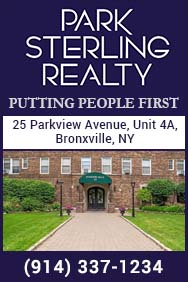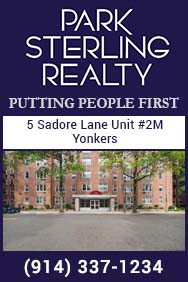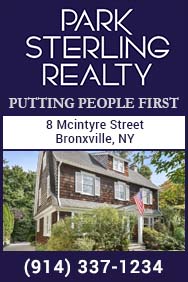From the Mayor: Supreme Court Leads Way to Close Tax Loophole for Internet Sales to the Benefit of Local Merchants

By Mary C. Marvin, Mayor, Village of Bronxville
Dec. 5, 2018: As the holiday season heads into full swing, I again urge you to shop local. The village is now completely leased out and the new energy is palpable. Your keeping holiday dollars local will not only help our dedicated small merchants but will materially affect the village’s next budget in April. The sales tax revenue component is key to the success of every local budget nationwide. Fully one-third of the majority of state revenues, totaling over $150 billion annually, comes from the collection of a sales tax.
For every $100 spent in a locally owned independent store, $68 returns to the home community. The same amount spent at a mall or chain store returns $48 “home” and if spent on the Internet, nothing comes back to the towns and villages.
Because of the increase in non-taxed Internet purchasing, the Commonwealth of Massachusetts estimates that it “loses” $335 million in sales tax revenue, and California pegs its “losses” at over $1 billion annually.
On the village level, a very positive trend has emerged as our portion of sales tax revenue has risen for a recent total of $997,644. Without this infusion of cash, villages taxes, which move one point on every $80,000 plus change in added expenses or loss of revenue, would increase an astonishing 12+%, which changes the competitive balances.
There is no question that the Amazons of the world have made huge negative inroads into local tax revenues and, as a consequence, increased municipal taxes and/or decreased municipal services.
One of the major frustrations is the tax exemption many online purchases receive. As an example, if a local merchant meets an Amazon item price of $100, the merchant automatically must add $8.25 to the purchase price.
The matrix could change, thanks to a 5-4 Supreme Court decision this past June in South Dakota v. Wayfair. The case overruled two prior Supreme Court decisions and held that state and local governments can require remote retailers, with no physical presence in the state, to collect and remit sales taxes. The decision actually does not impose any new taxes, rather, it closes what many have considered an unfair tax loophole that has placed brick-and-mortar businesses at a permanent, competitive disadvantage.
In South Dakota vs. Wayfair, the prevailing logic was that Wayfair’s “economic and virtual contacts” with South Dakota were enough to create a “substantial nexus” allowing the state to require tax collection.
As the Court pointed out in the majority opinion, state and local governments lose between $8 and $33 billion annually because of their inability to collect sales tax on purchases from out-of-state sellers. As background, the 1967 case of National Bellas Hess v. Department of Revenue Illinois held that the commerce clause requires a “physical presence” in order for taxes to be collected.
Twenty-five years later, in Quill v. North Dakota (1992), the court reaffirmed the physical presence requirement but admitted that “contemporary” Commerce Clause jurisprudence might not dictate the same result as the court had reached in Bellas Hess.
By law, customers buying from remote sellers still owe sales tax and are supposed to include the yearly amount in their tax returns; however, they rarely pay it when the remote seller does not actively collect it. Congress has had the authority to create a solution that would overrule Bellas Hess and Quill but never did so.
In Direct Marketing Association v. Brohl in 2015, Justice Kennedy wrote a concurring opinion stating that the “legal system should find an appropriate case for this Court to re-examine Quill." Following Justice Kennedy’s lead, a number of state legislatures, including South Dakota, passed laws requiring remote vendors to collect sales tax in order to challenge Quill, adding the provisos that tax only attached if a company does $100,000 worth of business or 200 transactions annually.
In the 5-4 Wayfair opinion, written by Justice Kennedy, the Court offered three reasons for overturning Quill: “physical presence” is not a necessary interpretation for establishing a substantial nexus “with the taxing State; Quill created rather than resolved market distortions; and third, Quill imposed a formalistic interpretation of the Commerce Clause that modern interpretations disavow.”
Overturning precedent isn’t something the Supreme Court often does or lightly. But the Court noted the Internet’s “prevalence and power” have dramatically changed the national economy since 1992, the year of the Quill case. In 1992, less than 2% of Americans had Internet access. Today, the number is 89%. In 1992, mail order sales in the United States totaled $180 billion. Last year, Internet retail sales topped $453.5 billion. In 1992, it was estimated that the states were losing between $694 million and $3 billion per year in sales tax revenue. Now the estimate ranges as high as $33 billion.
Governor Cuomo has proposed legislation consistent with the Wayfair decision in his last three executive budgets, only to be thwarted at the state senate level.
When and if a New York State law is passed, an estimated $320 million will be added to state coffers, and small retailers such as our loyal merchants will be put on equal footing. A purchase made in the village this holiday season sends thousands back to our school and village government and sends a message that you are investing in the future of our business district and all that it adds to our quality of life.
Editor's note: As a public service, MyhometownBronxville publishes articles from local institutions, officeholders, and individuals. MyhometownBronxville does not fact-check statements therein, and any opinions expressed therein do not necessarily reflect the thinking of its staff.
Government & History Directory
Bronxville is a quaint village (one square mile) located just 16 miles north of midtown Manhattan (roughly 30 minutes on the train) and has a population of approximately 6,500. It is known as a premier community with an excellent public school (K-12) and easy access to Manhattan. Bronxville offers many amenities including an attractive business district, a hospital (Lawrence Hospital), public paddle and tennis courts, fine dining at local restaurants, two private country clubs and a community library.
While the earliest settlers of Bronxville date back to the first half of the 18th century, the history of the modern suburb of Bronxville began in 1890 when William Van Duzer Lawrence purchased a farm and commissioned the architect, William A. Bates, to design a planned community of houses for well-known artists and professionals that became a thriving art colony. This community, now called Lawrence Park, is listed on the National register of Historic Places and many of the homes still have artists’ studios. A neighborhood association within Lawrence Park called “The Hilltop Association” keeps this heritage alive with art shows and other events for neighbors.
Bronxville offers many charming neighborhoods as well as a variety of living options for residents including single family homes, town houses, cooperatives and condominiums. One of the chief benefits of living in “the village” is that your children can attend the Bronxville School.
The Bronxville postal zone (10708, known as “Bronxville PO”) includes the village of Bronxville as well as the Chester Heights section of Eastchester, parts of Tuckahoe and the Lawrence Park West, Cedar Knolls, Armour Villa and Longvale sections of Yonkers. Many of these areas have their own distinct character. For instance, the Armour Villa section has many historic homes and even has its own newsletter called “The Villa Voice” which reports on neighborhood news.
Village of Bronxville Administrative Offices
337-6500
Open 9:00am - 4pm excluding holidays and weekends
Bronxville Police Department
337-0500
Open 24 hours
Bronxville Parking Violations
337-2024
Open 9:00am - 4pm excluding holidays and weekends
Bronxville Fire Deparment
793-6400



















